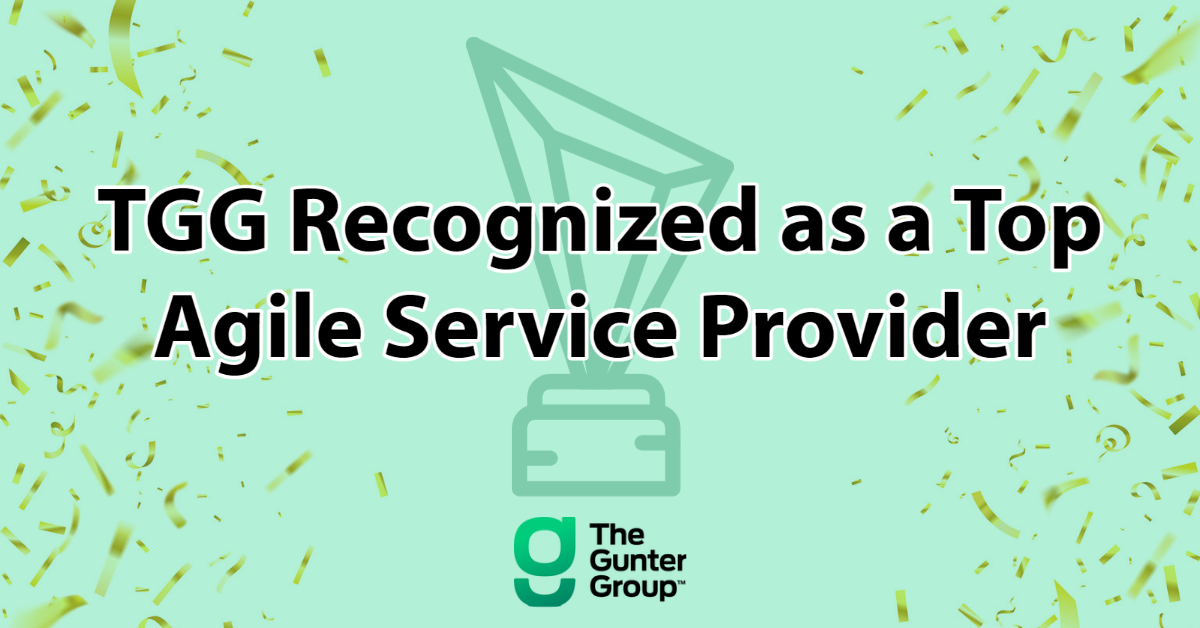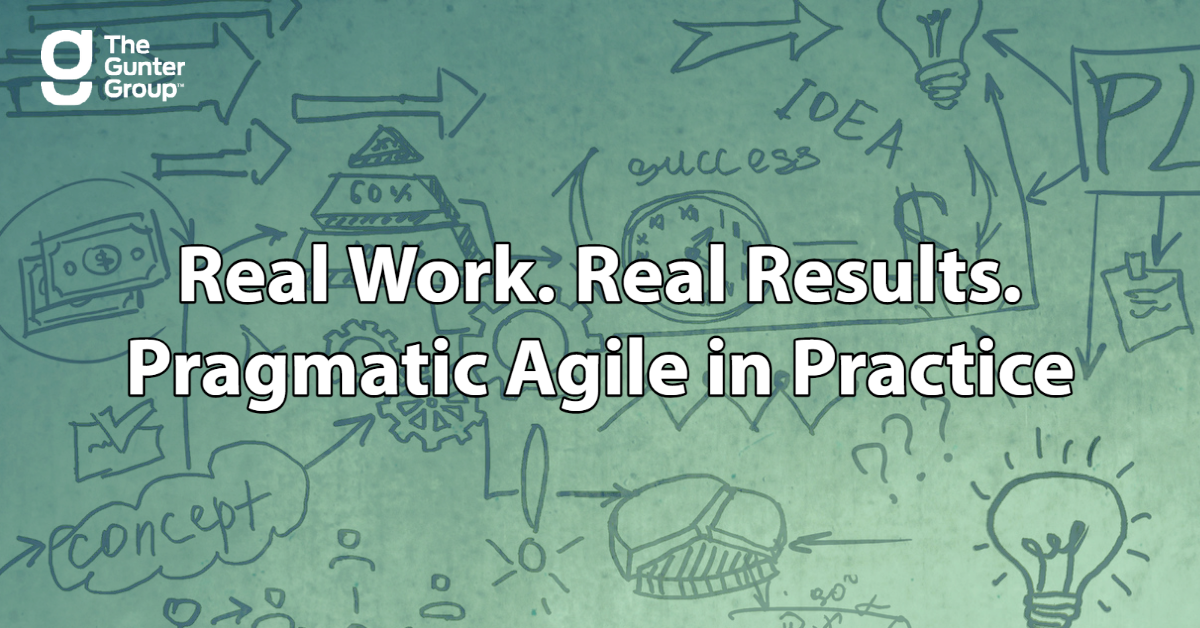TGG is honored to be recognized as a ‘Most Promising Agile Services Provider,’ particularly in the field of Digital Transformation. Matt Bader and Angela Tekulve share more details on how TGG supports organizations with Digital Transformations and Agile Services.
Tag Archives: Agile
TGG RECOGNIZED AS A TOP AGILE SERVICE PROVIDER
The Gunter Group was recently named one of the “10 Most Promising Agile Service Providers” by CIOReview magazine. TGG was identified through a nomination process for its ongoing and impactful agile work across a variety of industries and organizational levels.
REAL WORK. REAL RESULTS.
PRAGMATIC AGILE IN PRACTICE
Senior Consultant Rob Anteau, has been working with Agile and waterfall teams for decades. As a way to highlight pragmatic Agile in practice, we are sharing a recent example of an impactful Agile adoption he oversaw for a client.
FIRST STEPS AND HELPFUL FRAMEWORKS
(Agile Series Part 6)
The idea of adopting Agile methodologies may seem daunting. However, our experienced team is confident Agile principles can deliver results to your organization. Here we boil down the first steps leadership teams can take to build their Agile muscle and the frameworks to utilize along the way.
VELOCITY: DRIVING TOWARDS CONSISTENT VALUE DELIVERY
(Agile Series Part 5)
Velocity, at its core, is the simple measurement of the rate at which a team consistently delivers business value to an organization’s customers. A pragmatic approach to determining velocity creates healthy team dynamics, a collaborative culture, and more engaged employees.
THE RETROSPECTIVE AND KEYS TO SUCCESS
(Agile Series Part 4)
The main theme of the retrospective is accountability. The beauty of the retrospective is its simplicity. It’s not limited to software development, or even IT. Any team can adopt this ceremony on an iterative basis, adapting it to their needs and situation.
THE POWER OF BIG ROOM PLANNING
(Agile Series Part 3)
While there are many frameworks that organizations utilize for scaling Agile, there is one common element across all of them: a need to plan and coordinate across multiple business and IT teams to promote consistent value delivery quarter-over-quarter, year-over-year. That’s where Big Room Planning comes into play.
AGILE: REALIZING SUCCESS THROUGH A PRAGMATIC APPROACH
(Agile Series Part 2)
Everyone has an opinion: Agile works for tech, but not for business. Agile transformation is just another buzz phrase. Agile does have its limits, but for those organizations seeking change, we have developed a pragmatic approach to help businesses find success while transforming their organization.
A LETTER TO THOSE WHO HAVE GIVEN UP ON AGILE
(Agile Series Part 1)
The direct value of a more iterative approach to strategic change and improvement is obvious in most cases. The hidden challenge however, is changing behavior to truly be Agile. Join us in this series to understand what you can do today to start gaining value from your Agile journey.








